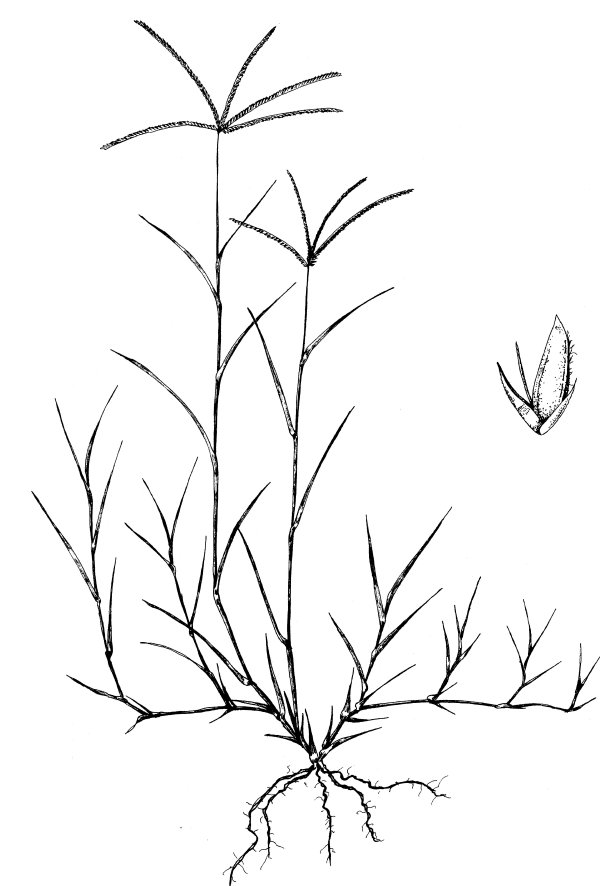
Cynodon dactylon (L.). Bermudagrass Habit: Low diffuse and extensively creeping perennial, with scaly rhizomes and long, strong, flat stolons. Culms: Flowering culms 10-30 cm. tall or taller, erect, smooth and glabrous, flattened, wiry. Blades: 2.5-5 cm. long, 1-4 mm. wide, flat, rigid, smooth beneath, scabrous above, villous at base near ligule, often conspicuously 2-ranked. Sheaths: Crowded at the base of the culm and along stolons, mostly glabrous. Ligule: A conspicuous ring of white hairs. Inflorescence: Spikes 3-8, purple, 1.5-5 cm. long, rachis flat. Spikelets: 2 mm. long, numerous, imbricated, flattened, in slender digitate spikes, sessile in two rows on one side of the slender, continuous rachis, 1-flowered, laterally compressed, awnless, rachilla disarticulating above the glumes and prolonged behind the palea as a slender, naked bristle, sometimes bearing a rudimentary lemma. Glumes: Narrow, acuminate, 1-nerved, about equal, 1.5 mm. long, hispid on the keel, the first shorter than the second, two thirds as long as the lemma. Lemmas: Firm, strongly compressed, about 2 mm. long, broad, boat-shaped, acute, ciliate on the keel, the lateral nerves close to the margins. Palea: About as long as its lemma, ciliate on the prominent keels. Floret: Stigmas purple, stamens 3. Fruit: Grain free, within the lemma and palea. Habitat: Fields and waste places, lawns. July-September. Kansas Range: East three-fifths to Finney county. Use: Often used as a lawn grass. It survives the rigors of most winters except in more exposed places in northern Kansas, as well as summer droughts. In southeastern United States, it is the most important pasture grass.